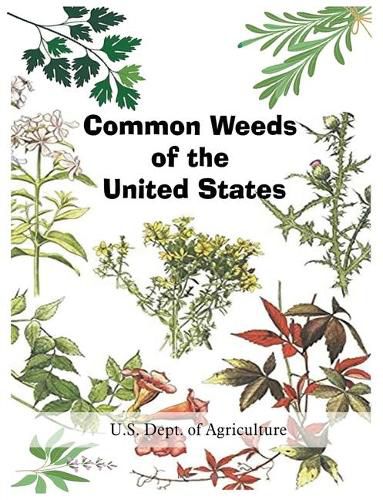Readings Newsletter
Become a Readings Member to make your shopping experience even easier.
Sign in or sign up for free!
You’re not far away from qualifying for FREE standard shipping within Australia
You’ve qualified for FREE standard shipping within Australia
The cart is loading…






This title is printed to order. This book may have been self-published. If so, we cannot guarantee the quality of the content. In the main most books will have gone through the editing process however some may not. We therefore suggest that you be aware of this before ordering this book. If in doubt check either the author or publisher’s details as we are unable to accept any returns unless they are faulty. Please contact us if you have any questions.
There are countless manuals and reference works available that identity wildflowers, trees, shrubs, mushrooms, herbs, and other plants. Yet, if you want to identify one of the plants that you see most often and find everywhere – those classified as weeds – you will experience great difficulty, for remarkably little has been published to help you.
This volume, is almost unique – the most useful non-technical identification guide and source of information ever compiled on weeds of the continental United States. Almost any common weed you are likely to encounter can be identified from its pages, in which you will also find much other data about it. Prepared by the United States Department of Agriculture, it is a painstaking, up-to-date survey of more than 220 important species.
At least two pages are devoted to each species. One contains a clear, accurate drawing of the plant in habit, flower, fruit, seeds, capsules, etc. Facing it is a full descriptive text that includes botanical notice, habitat, area, peculiarities, origin, etc., with a map in each case showing distribution throughout the United States. The species are arranged botanically, following the classificatory order. Both scientific and common names are given. A glossary explains all technical terms used, and a series of drawings shows the various types of leaves, roots, stems, fruits, flowers, and inflorescences for the nonbotanist.
The nature lover, collector, and hobbyist will discover here a specialty rich in interest and potential value, for much about the weeds still remains to be learned. For the botanist, this volume represents a useful ready reference. For the gardener, farmer, and livestock owner it can be an important aid. Even the general reader will find it inviting, explaining much about what he sees on virtually every patch of untended ground.
$9.00 standard shipping within Australia
FREE standard shipping within Australia for orders over $100.00
Express & International shipping calculated at checkout
This title is printed to order. This book may have been self-published. If so, we cannot guarantee the quality of the content. In the main most books will have gone through the editing process however some may not. We therefore suggest that you be aware of this before ordering this book. If in doubt check either the author or publisher’s details as we are unable to accept any returns unless they are faulty. Please contact us if you have any questions.
There are countless manuals and reference works available that identity wildflowers, trees, shrubs, mushrooms, herbs, and other plants. Yet, if you want to identify one of the plants that you see most often and find everywhere – those classified as weeds – you will experience great difficulty, for remarkably little has been published to help you.
This volume, is almost unique – the most useful non-technical identification guide and source of information ever compiled on weeds of the continental United States. Almost any common weed you are likely to encounter can be identified from its pages, in which you will also find much other data about it. Prepared by the United States Department of Agriculture, it is a painstaking, up-to-date survey of more than 220 important species.
At least two pages are devoted to each species. One contains a clear, accurate drawing of the plant in habit, flower, fruit, seeds, capsules, etc. Facing it is a full descriptive text that includes botanical notice, habitat, area, peculiarities, origin, etc., with a map in each case showing distribution throughout the United States. The species are arranged botanically, following the classificatory order. Both scientific and common names are given. A glossary explains all technical terms used, and a series of drawings shows the various types of leaves, roots, stems, fruits, flowers, and inflorescences for the nonbotanist.
The nature lover, collector, and hobbyist will discover here a specialty rich in interest and potential value, for much about the weeds still remains to be learned. For the botanist, this volume represents a useful ready reference. For the gardener, farmer, and livestock owner it can be an important aid. Even the general reader will find it inviting, explaining much about what he sees on virtually every patch of untended ground.